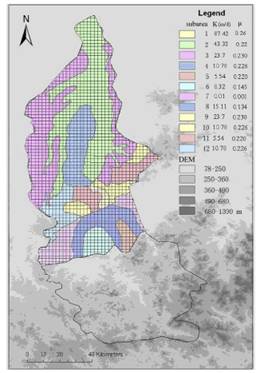Identifying the Sustainable Groundwater Yield in a Chinese Semi-humid Basin
2012-09-18
Groundwater is a vital resource for industrial, agricultural and human needs. Due to the increasing water scarcity that has occurred in recent years, identifying the suitable groundwater yield has shifted from a basic problem in hydrogeologic research to an urgent and fundamental issue for the sustainable development of groundwater. Current methodologies to determine groundwater sustainable yield include the water equilibrium method, numerical simulation, baseflow division, isotopic tracer technique and so on. However, there are still many ecological and geological environmental problems induced by groundwater exploitation in practices.
Yinma River Basin is located in the middle section of Jilin Province in China, from Hada Mountain in the south to the second Songhua River in the north, and bounded by watersheds to the east and west. Owing to the growth of agriculture area and industries, water resources use increases recently in this basin. The result of the development was the shortage of eco-environmental water use. So, it is important to design an entire basin water cycling model to achieve the maximum environmental and economic benefits in this basin.
The primary goal of this study was to identify the optimized amount of groundwater exploitation in Yinma River Basin. One major limit to identify sustainable groundwater yield is the lack of a unified evaluation criterion because there are many factors involved in hydrological systems that are difficult to quantify. To address this problem, an integrated evaluation model was constructed for a series of purposes including the maximal efficiency of water use, the integral benefit of development and utilization, the optimized environmental water demand and the minimal anthropogenic influence on groundwater system. It consists of a benefit model, a water cycling simulation model and an optimization model. The basin-wide model for water cycling simulation was a basic component to simulate scenarios with different constraints, and the best water development strategy was thereafter identified using the integral benefit model of water resources development. The results indicated that the optimized groundwater yield could be sustained by intensive reservoir supply and maintain suitable ecological water demand simultaneously. The work proposed a potential groundwater utilization strategy for economically developing countries across the world.
The result has been published on Journal of Hydrology, 2012, 452–453: 14–24. The paper can be downloaded from http://www.sciencedirect.com/science/article/pii/S0022169412003939.

Discretization of the Yinma River Basin showing grid cells and distribution parameters. (Image by XIEG)



